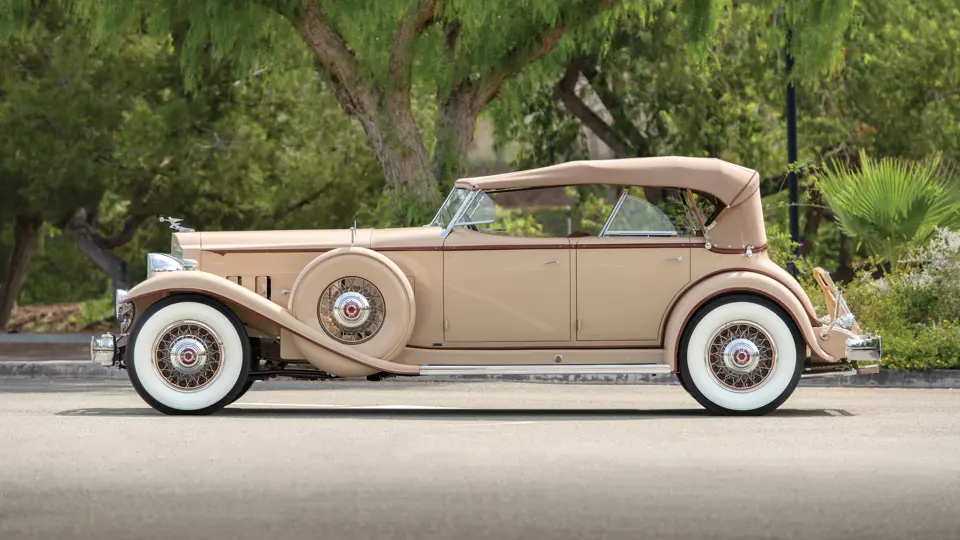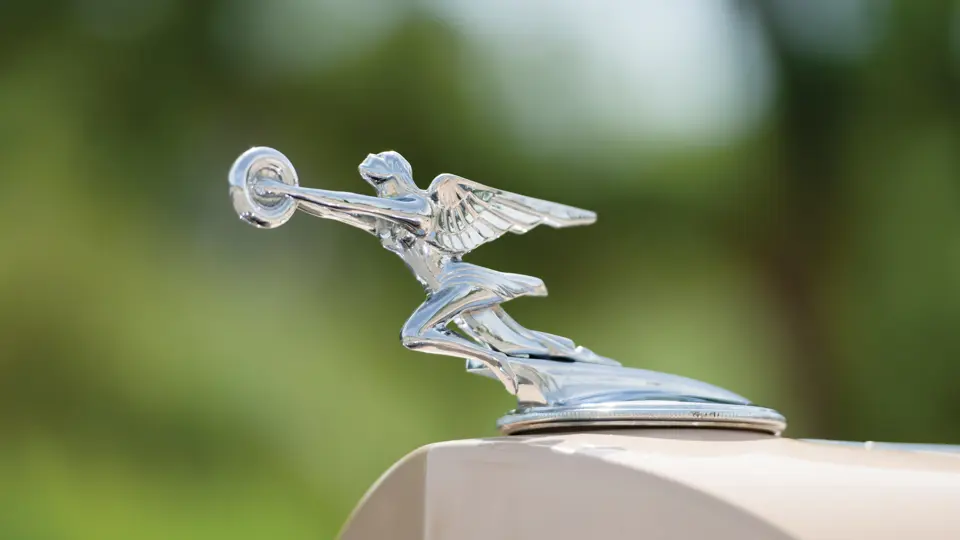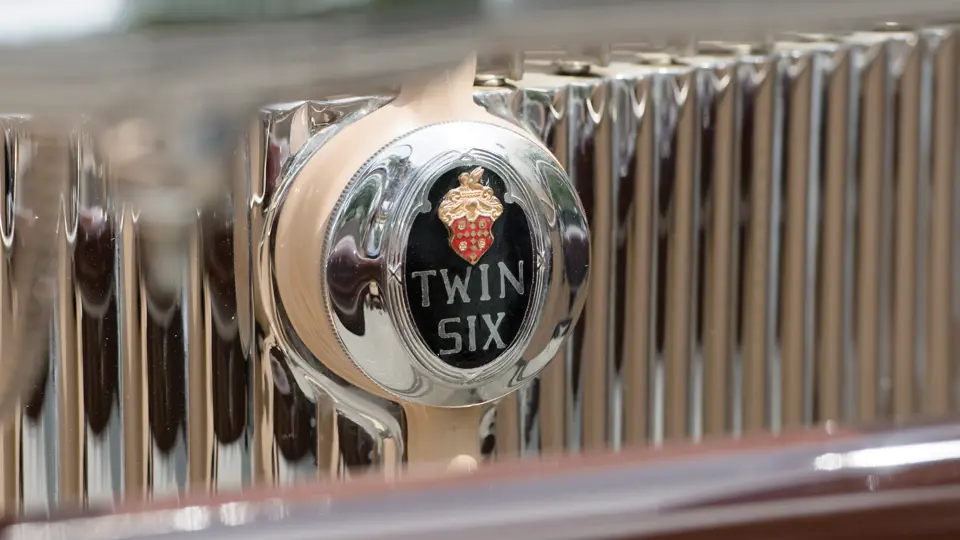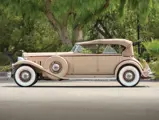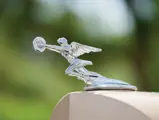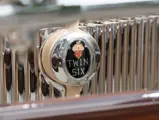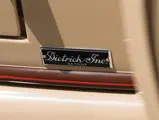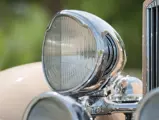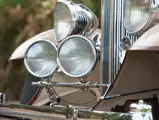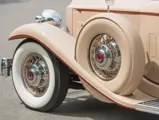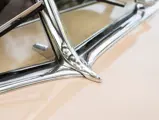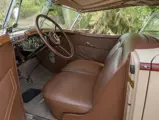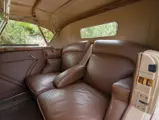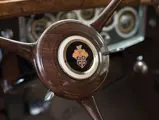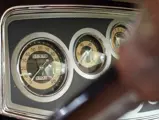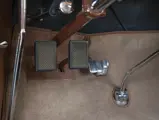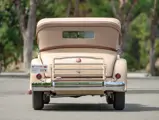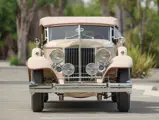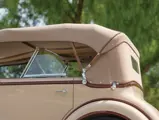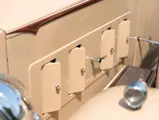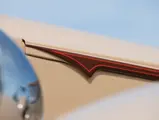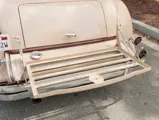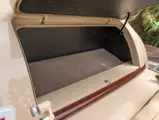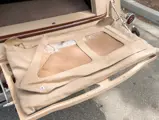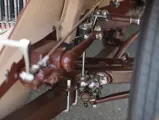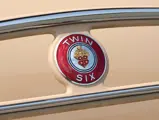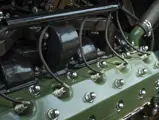
1932 Packard 906 Individual Custom Twin Six Sport Phaeton in the style of Dietrich
{{lr.item.text}}
$440,000 USD | Sold
{{bidding.lot.reserveStatusFormatted}}
- Exhibited at the 1987 Pebble Beach Concours d’Elegance
- 2006 Hillsborough Concours d’Elegance award winner
- 2015 San Marino Motor Classic class winner; CCCA Grand Classic national event
Series 906. 160 hp, 445.5 cu. in. V-12 engine, three-speed selective synchromesh manual transmission, front and rear beam-axle suspension with semi-elliptical leaf springs and hydraulic lever shock absorbers, and four-wheel vacuum-assisted mechanical brakes. Wheelbase: 147 in.
It was with both great surprise and great fanfare that Packard introduced its Ninth Series on June 17, 1931, nearly eight months ahead of the typical new model introduction. The Standard Eight Series 901 and 902, the Deluxe Eight Series 903 and 904, and the Individual Custom Eight, also under the Series 904, received significant updates over the short model run of the preceding Eighth Series. Packard further astounded the automotive world with the January 1932 introduction of the new Light Eight, its first medium-priced automobile, along with the return of the Twin Six V-12 Series 905 and 906 at the upper-end of the company’s lineup.
The Twin Six was introduced at the New York Automobile Show and was Packard’s entry into the multi-cylinder race. The V-12 was designated Twin Six, a one-year-only nostalgic remembering of the World War I-era Twin Sixes. Beginning in 1933 until the final cars were produced in 1939, the V-12 would be known simply as the Packard Twelve. Wheelbases on the Series 905 cars were 142.5 inches, while the Series 906 Individual Customs used Packard’s longest wheelbase at 147 inches. Prices began at $3,650 and rose quickly to $7,950—before options. The re-introduction of the Twin Six created such excitement among the well-to-do that it was flashed across the ticker tape on the floor of the New York Stock Exchange.
Ten body styles were offered on the 905 chassis and another 11 on the 906 chassis, including the sport phaeton, one of six Dietrich styles. The sport phaeton began at $6,300. Although Packard continued to dominate the luxury car field, it built just 311 905s and only 238 906s for 1932. With each car came an official “Certificate of Approval” signed by a Packard engineer, specifying that a break-in test of 250 miles had been completed on the fully equipped car, that all adjustments had been performed, and that the motor had been fine-tuned. It is believed that Packard built just six Series 906 Sport Phaetons in 1932.
Mechanically, the Twin Six had many innovations that found their way into lesser Packards. Vacuum booster brakes, an automatic clock, an electric gas gauge, hydraulic valve silencers, a solenoid-operated starter switch, downdraft carburetion, and an oil dipstick were among them. The top speed of all the Twin Sixes was reported to be over 100 mph, but Packard conservatively claimed “in excess of 85 mph” in its advertising.
Raymond Dietrich was an extremely talented designer who co-founded LeBaron with Thomas Hibbard. However, when Hibbard left for Paris, Dietrich established a new firm bearing his own name, Dietrich Inc. While well respected for his talents, Dietrich’s greatest and most lasting legacy were the custom bodies he designed while at Packard. Quite simply, Dietrich designs were drop-dead gorgeous, and the 1932 models would be his last for Packard.
Ray Dietrich’s sport phaeton design for the new-for-1932 Twin Six model was the inspiration for this glamorous dual-cowl sport phaeton, built in 1981 to beautiful standards and assembled by Dave Tobin in 1986. The sheet metal and aluminum body were crafted by the famous shop California Metal Shapers. Sitting atop Packard’s longest chassis, it is fitted with dual side-mount spare tires, a rear-mounted trunk rack, a built-in rear trunk, and Pilot Ray driving lights. Of note are the top bows, rear window, and seats, all of which are original Dietrich Individual Custom pieces. The hand-crafted aluminum body over a wood frame was built to replicate the original design, including the dual cowls and windshields.
The car was reconditioned with new paint and pinstriping, as well as its wheels and mechanicals, after which it was exhibited at the 1987 Pebble Beach Concours d’Elegance. In 2006, it was freshened by Martin Hveem Automobile Restoration in Red Bluff, California. At this time, the top and seats were reupholstered by Dan Most, of Napa, California, and Collector Car, also of Napa, restored the wheels and fitted new tires. Following this, it was last shown at the 2006 Hillsborough Concours d’Elegance where it was presented the Strother McMinn Design Award for its inspirational design elements. After remaining in a private Palm Springs collection since 2007, the sports phaeton returned to compete in the San Marino Motor Classic in 2015, earning First in Class.
Arguably among the most handsome of all Packard models, the Ninth Series cars of 1932 are quite desirable to today’s collectors of Packards and cars of the Classic Era, and this car is certainly a beautiful example. It will no doubt delight its new owner, whether it is shown on the lawn or touring at speed.


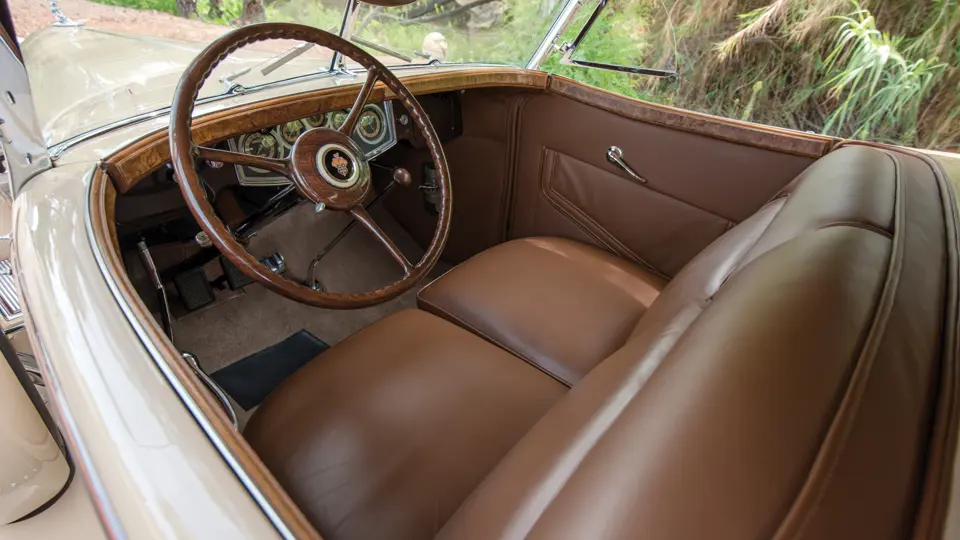

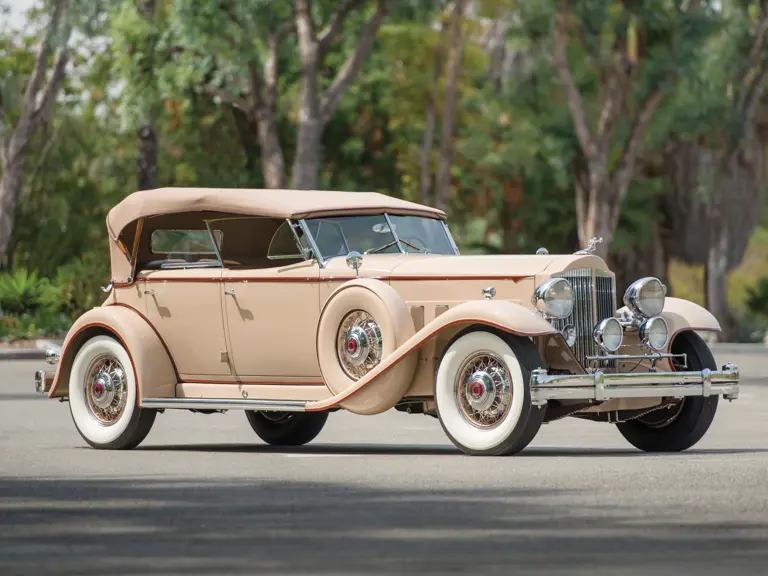
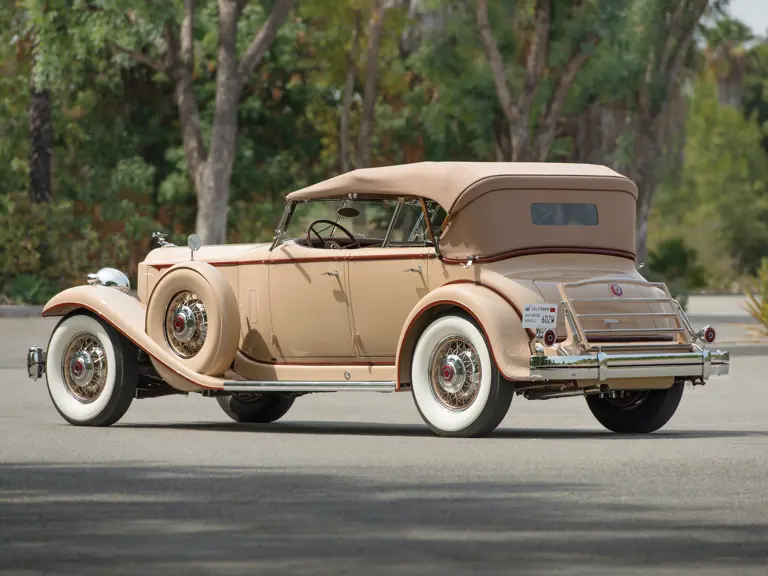

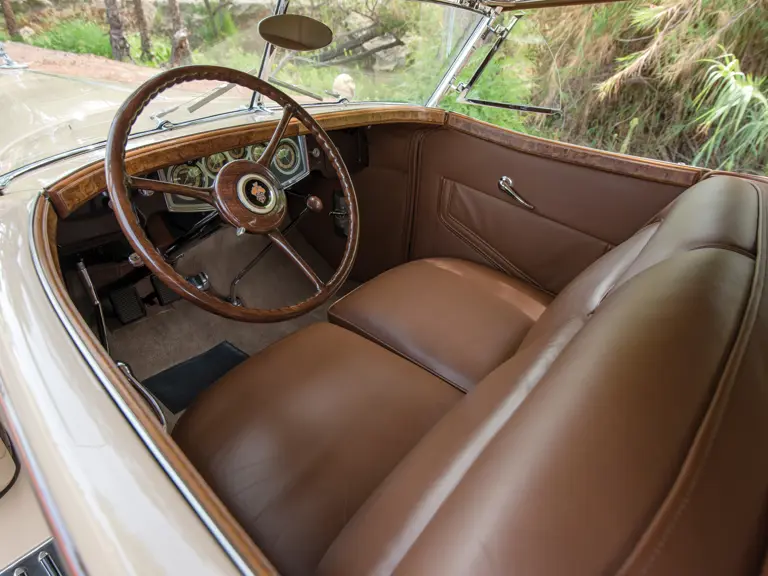

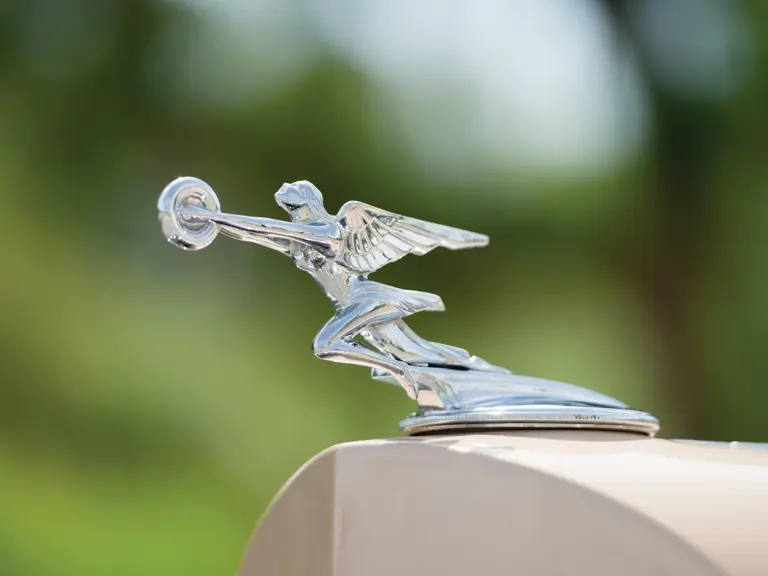
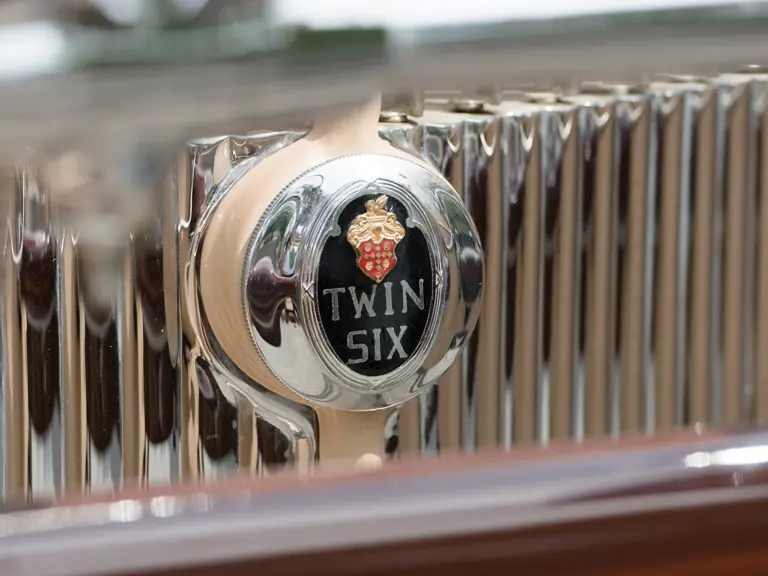

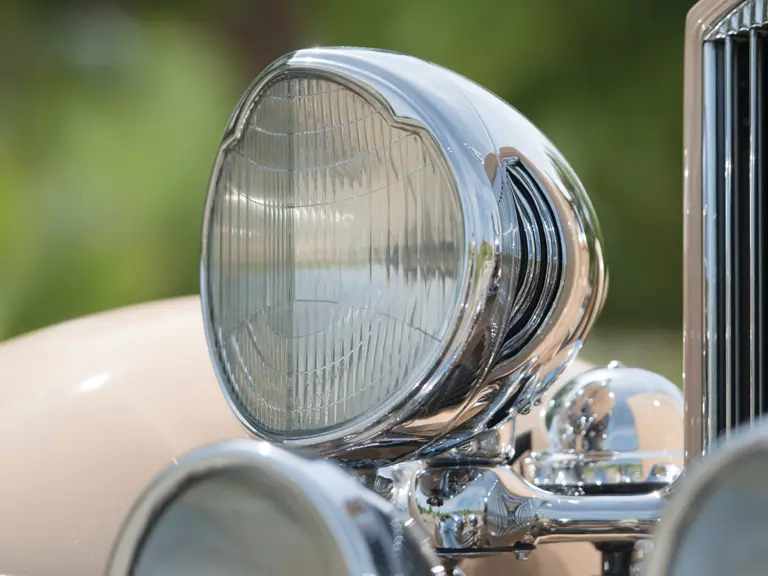
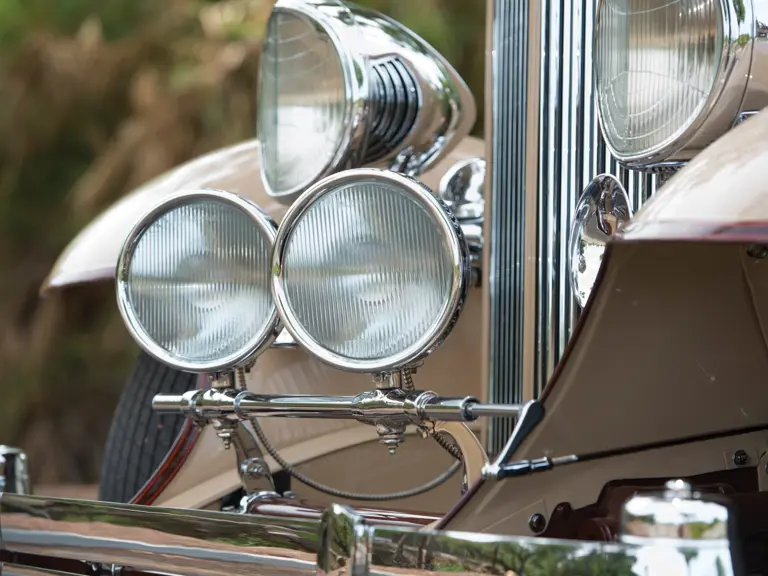
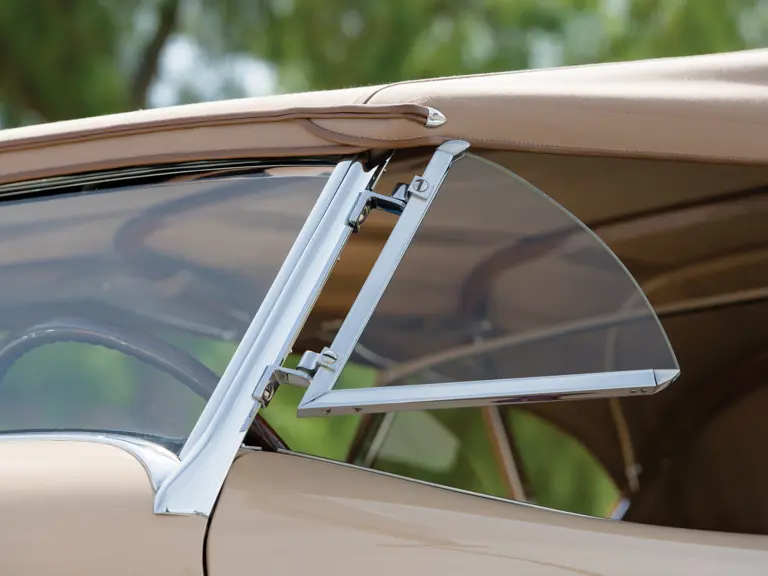
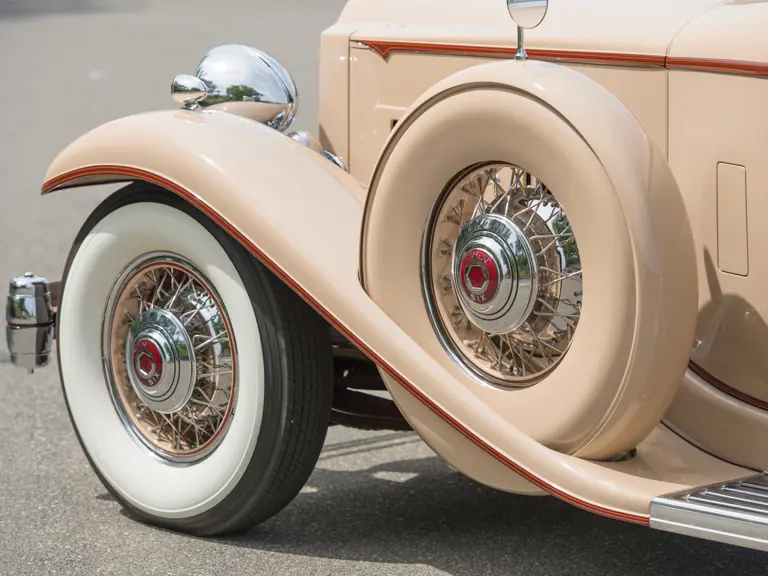


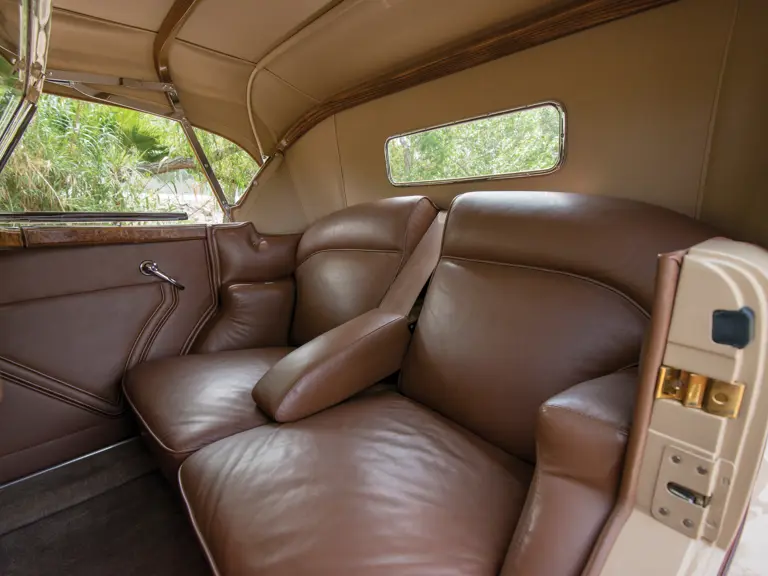
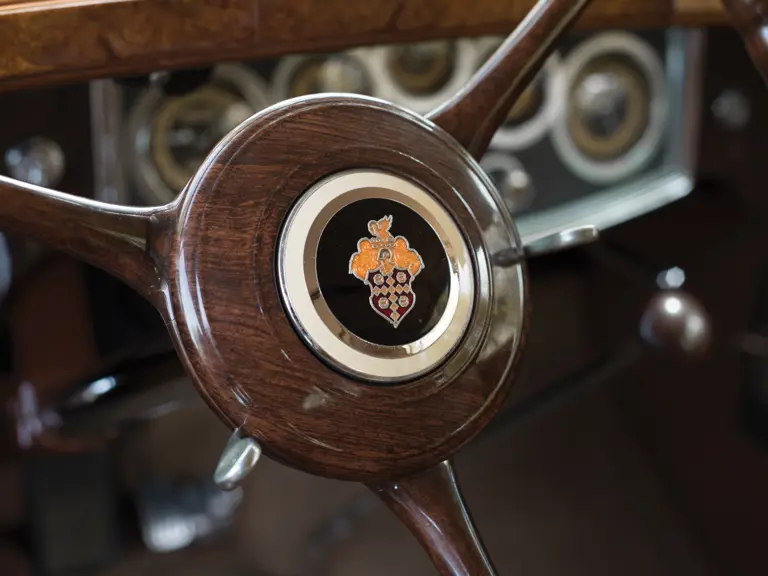
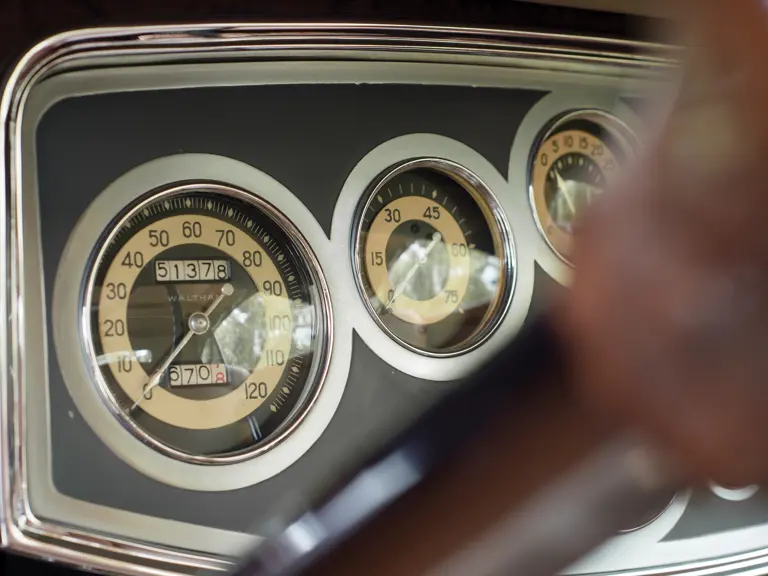
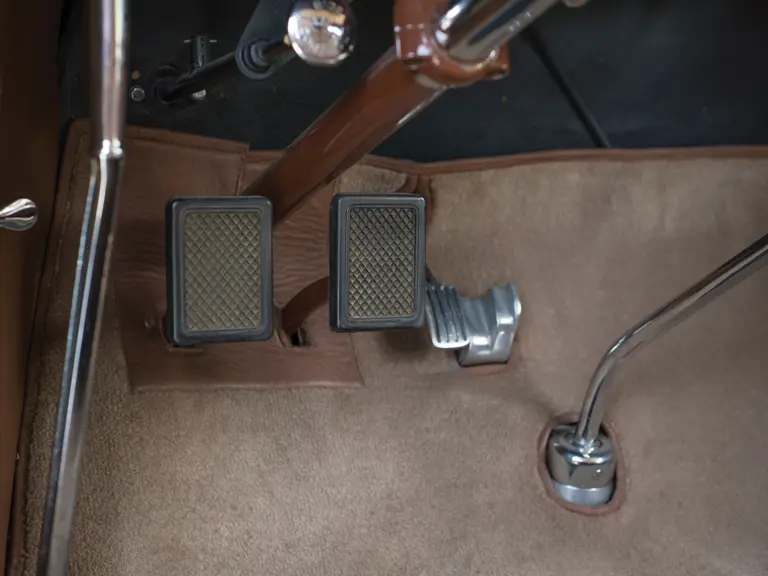
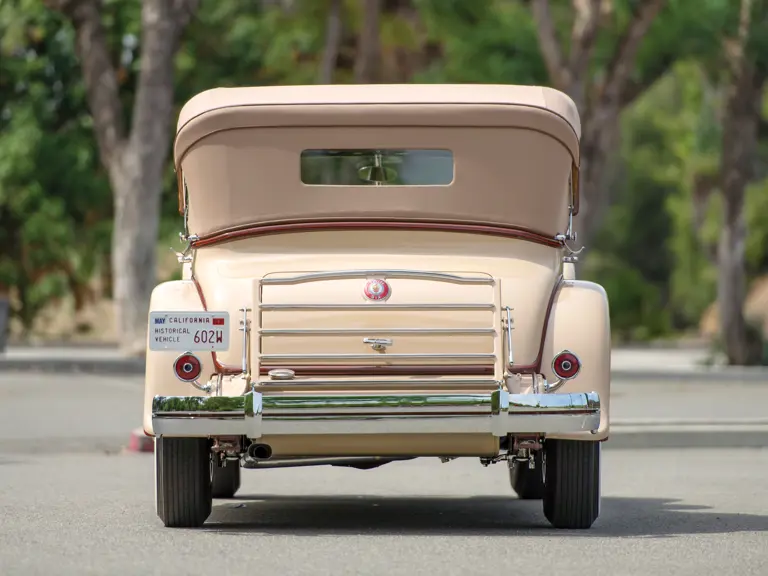
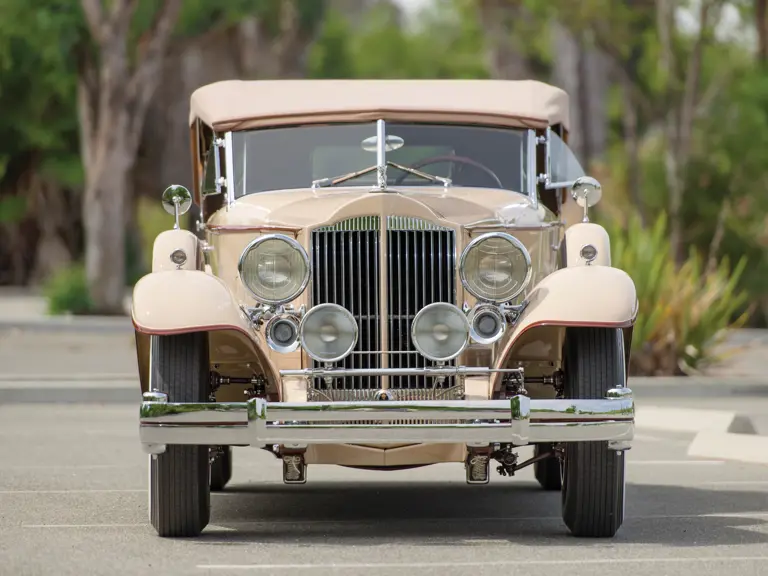
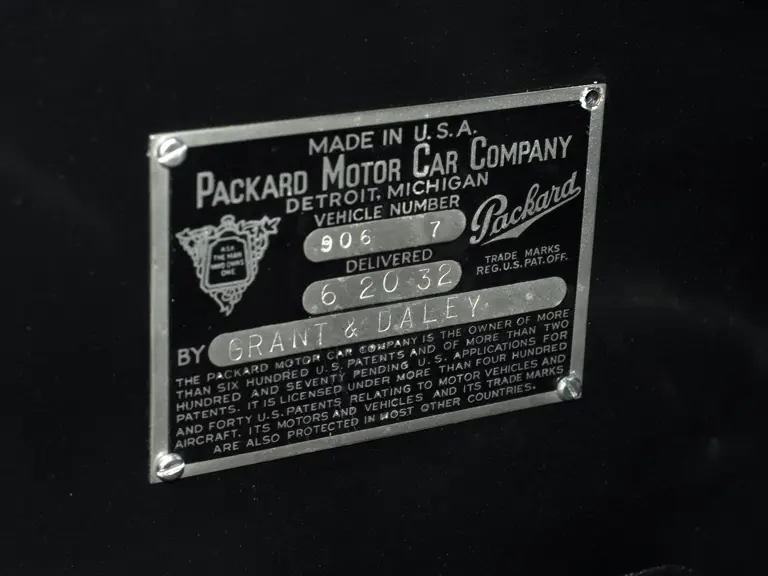
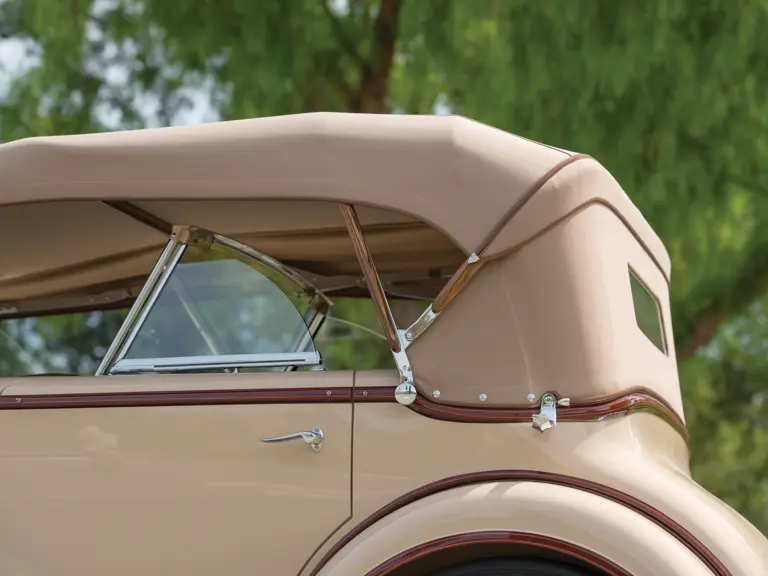
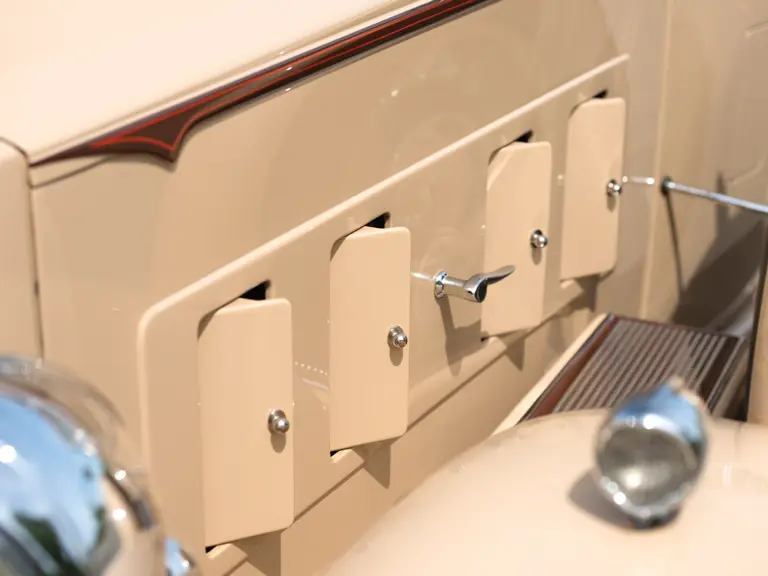
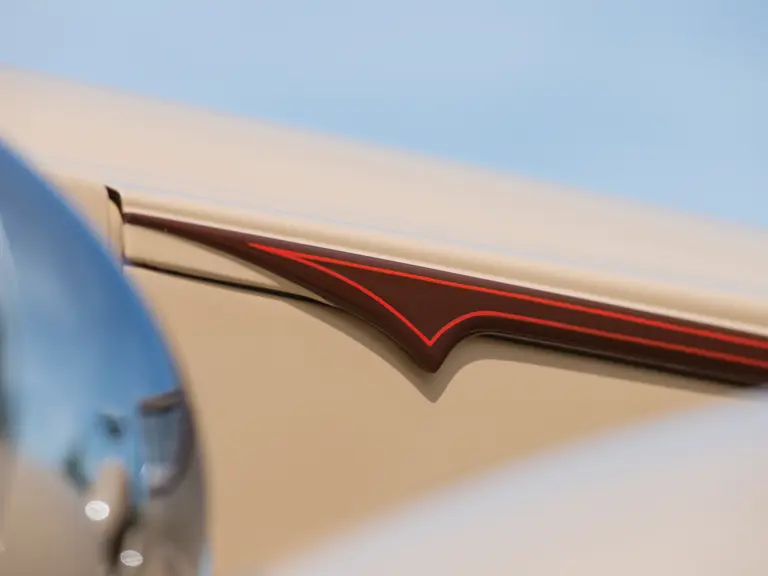
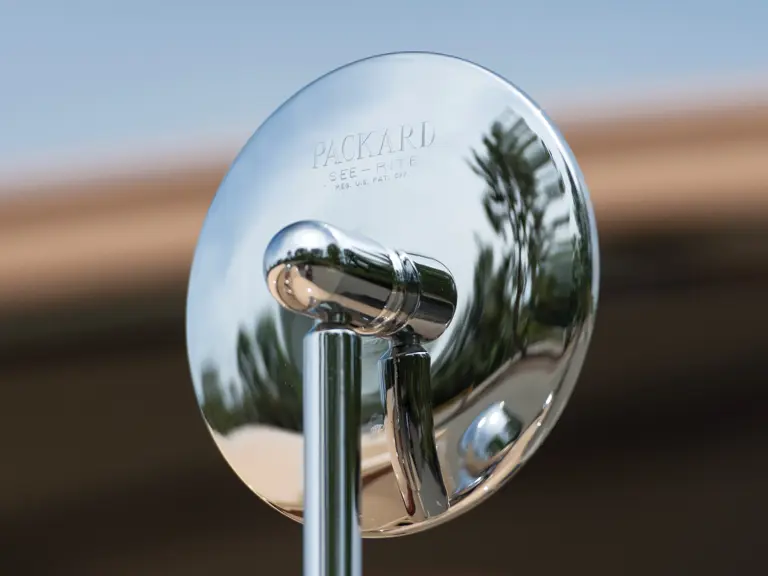
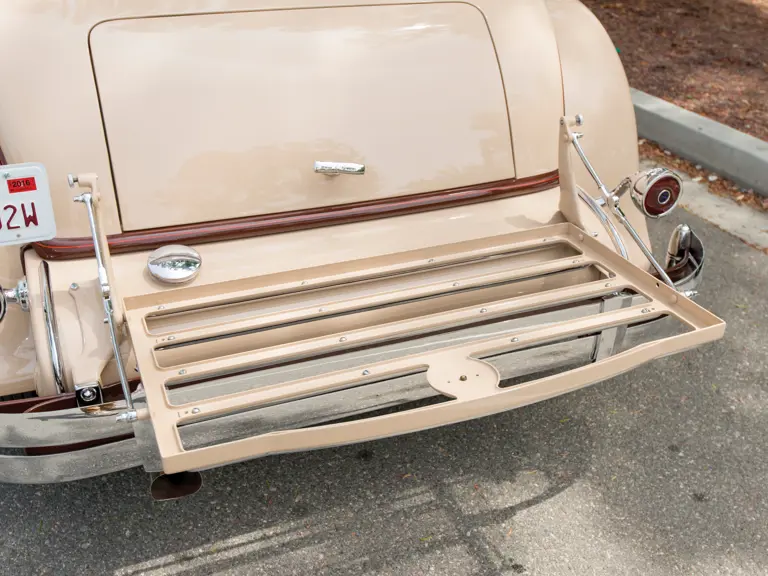
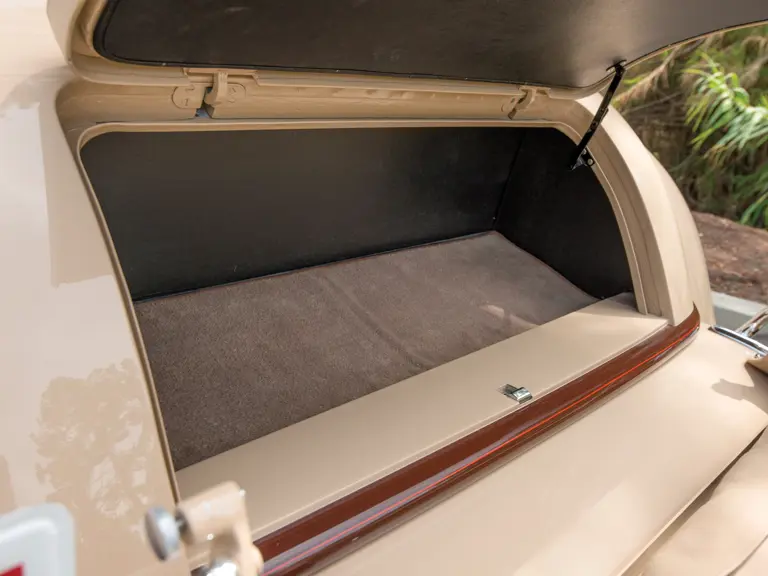
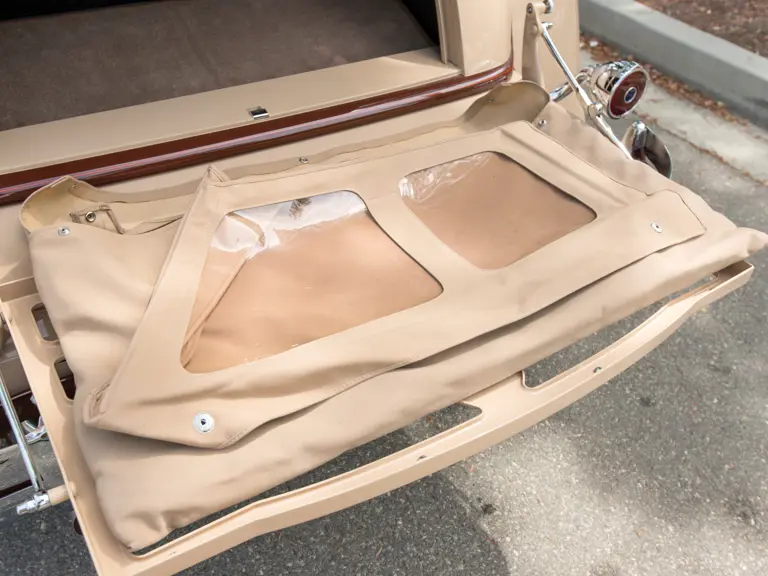
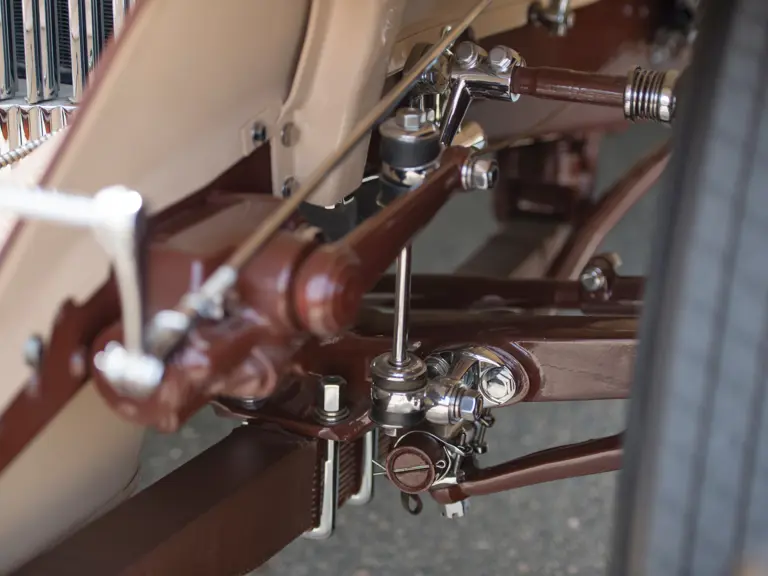
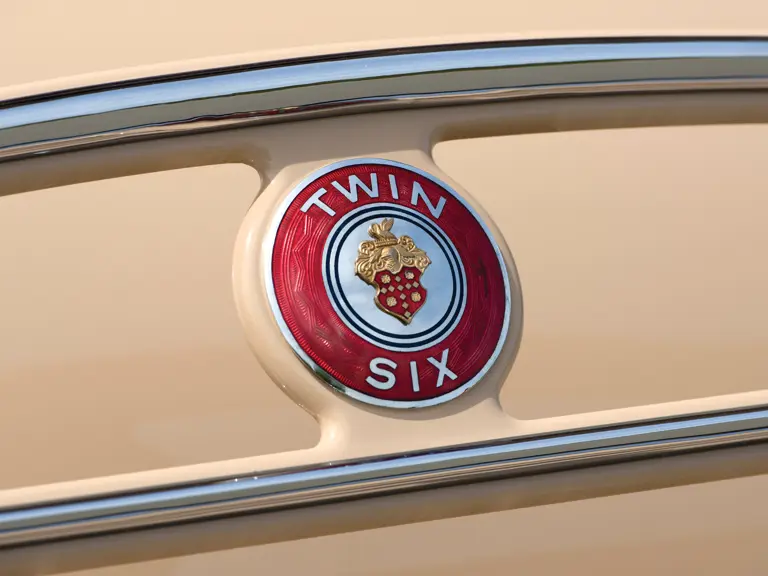
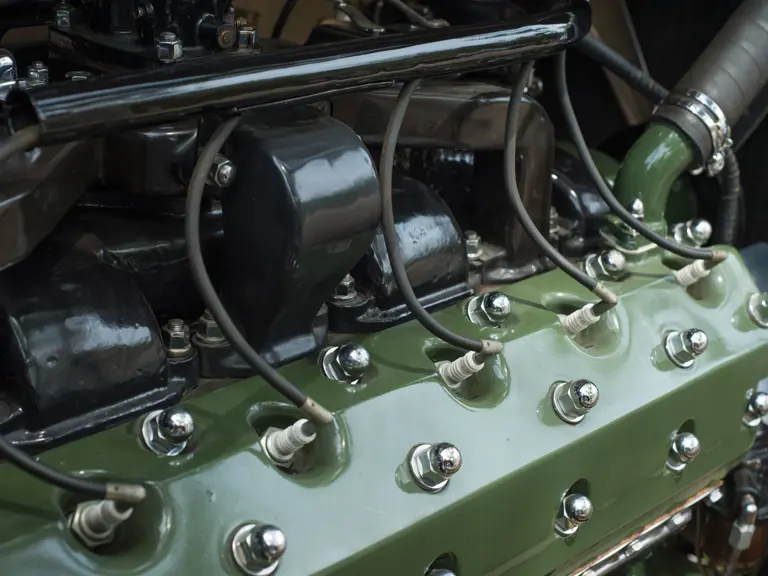
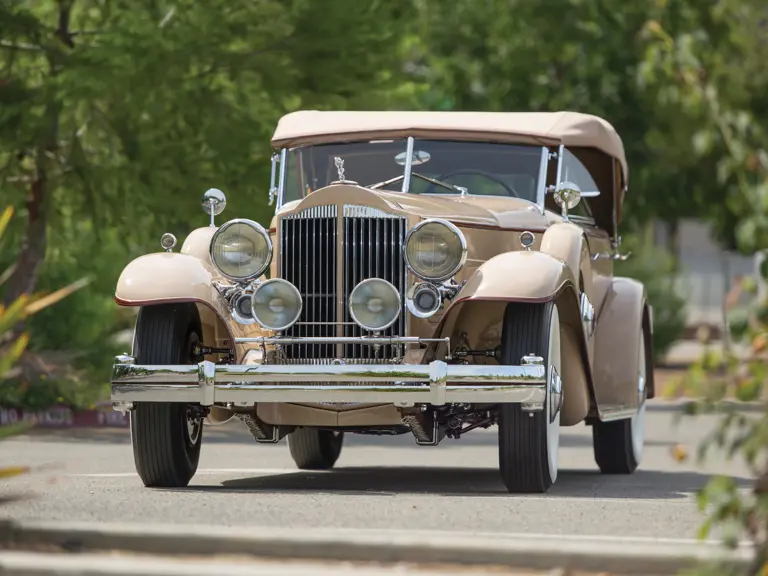
 | Hershey, Pennsylvania
| Hershey, Pennsylvania
